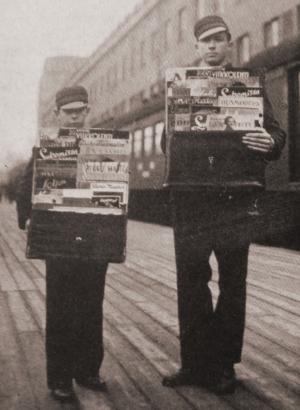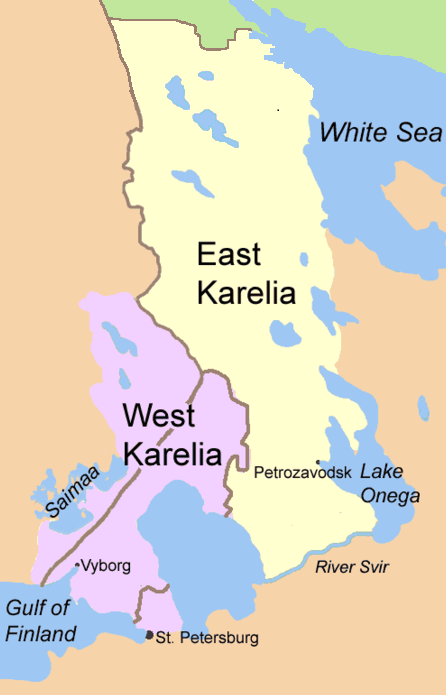|
Tapio Rautavaara
Kaj Tapio Rautavaara (8 March 1915 – 25 September 1979) was a Finnish singer (bass-baritone), athlete and film actor. Life Early years Tapio Rautavaara was born in the municipality of Pirkkala (now Nokia), a suburb of the industrial city of Tampere, as the son of Henrik Kerttula and Hilda Rautavaara. Just three weeks later, his mother moved to the Helsinki suburb of Oulunkylä, where she had lived before. Rautavaara's father was rarely at home, and soon left the family permanently. In 1921, Tapio and his mother moved to Tampere. Rautavaara used to have conflicts with his conservative teachers due to his working-class background. Tapio earned pocket money by selling socialist papers for local workers of the Finlayson textile factory. Four years later, the family returned Oulunkylä, where Rautavaara lived the rest of his life. In the late 1920s, Rautavaara joined the local working-class sports club Oulunkylän Tähti (″Oulunkylä Star″) for practicing athletics. Rautava ... [...More Info...] [...Related Items...] OR: [Wikipedia] [Google] [Baidu] |
Nokia, Finland
Nokia () is a town and a municipality on the banks of the Nokianvirta River (part of the Kokemäki River) in the region of Pirkanmaa, some west of Tampere in Finland. The distance to Tampere Airport from Nokia is using road connections when circling Lake Pyhäjärvi. Its neighboring municipalities are Hämeenkyrö, Pirkkala, Sastamala, Tampere, Vesilahti and Ylöjärvi. As of it has a population of and it is one of the fastest-growing cities in the area; today, Nokia is the largest municipality of Finland by population, and the second largest municipality in Pirkanmaa after Tampere. Etymology and heraldry The origin of the name ''Nokia'' is obscure. In modern Finnish, ''noki'' means soot and ''nokia'' is its inflected plural, although this form of the word is rarely if ever used. The most common theory claims the name actually originates from the archaic Finnish word ''nois'' ( pl. ''nokia'') or ''nokinäätä'' ("soot marten"), meaning sable. After the sable was hunted t ... [...More Info...] [...Related Items...] OR: [Wikipedia] [Google] [Baidu] |
Winter War
The Winter War,, sv, Vinterkriget, rus, Зи́мняя война́, r=Zimnyaya voyna. The names Soviet–Finnish War 1939–1940 (russian: link=no, Сове́тско-финская война́ 1939–1940) and Soviet–Finland War 1939–1940 (russian: link=no, Сове́тско-финляндская война́ 1939–1940) are often used in Russian historiographybr>В.Н. Барышников. От прохладного мира к Зимней войне. Восточная политика Финляндии в 1930–е годы. Санкт-Петербург, 1997.; О.Д. Дудорова. Неизвестные страницы Зимней войны. In: Военно-исторический журнал. 1991. №9.; Зимняя война 1939–1940. Книга первая. Политическая история. М., 1998. – ; ttp://www.otvaga2004.narod.ru/photo/winterwar/wwar1.htm М. Коломиец. Танки в Зимней войне 19 ... [...More Info...] [...Related Items...] OR: [Wikipedia] [Google] [Baidu] |
Finnish Workers' Sports Federation
The Finnish Workers' Sports Federation ( fi, Suomen Työväen Urheiluliitto, ''TUL'', sv, Arbetarnas Idrottsförbund i Finland, ''AIF'') is a Finnish amateur sports organization founded in 1919. In addition to the competitive sports, TUL focuses on youth activities and youth education as well as offering activities regardless of age, gender, ethnicity or financial means. TUL is one of the member associations of the Finnish Olympic Committee. TUL is affiliated with the Central Organisation of Finnish Trade Unions as well as the Social Democratic Party of Finland and Left Alliance. It is also a member of the International Labour Sports Federation (CSIT). TUL currently has more than 280,000 members, active in 1,000 clubs in 59 different sports. History Early years After the 1918 Finnish Civil War, the Finnish Gymnastics and Sports Federation (SVUL) dismissed all clubs and athletes who had participated the war on the Red side. On 26 January 1919, 56 labour movement related club ... [...More Info...] [...Related Items...] OR: [Wikipedia] [Google] [Baidu] |
Archer
Archery is the sport, practice, or skill of using a bow to shoot arrows.Paterson ''Encyclopaedia of Archery'' p. 17 The word comes from the Latin ''arcus'', meaning bow. Historically, archery has been used for hunting and combat. In modern times, it is mainly a competitive sport and recreational activity. A person who practices archery is typically called an archer, bowman, or toxophilite. History Origins and ancient archery The oldest known evidence of the bow and arrow comes from South African sites such as Sibudu Cave, where the remains of bone and stone arrowheads have been found dating approximately 72,000 to 60,000 years ago.Backwell L, d'Errico F, Wadley L.(2008). Middle Stone Age bone tools from the Howiesons Poort layers, Sibudu Cave, South Africa. Journal of Archaeological Science, 35:1566–1580. Backwell L, Bradfield J, Carlson KJ, Jashashvili T, Wadley L, d'Errico F.(2018). The antiquity of bow-and-arrow technology: evidence from Middle Stone Age layers ... [...More Info...] [...Related Items...] OR: [Wikipedia] [Google] [Baidu] |
Javelin Throw
The javelin throw is a track and field event where the javelin, a spear about in length, is thrown. The javelin thrower gains momentum by running within a predetermined area. Javelin throwing is an event of both the men's decathlon and the women's heptathlon. History The javelin throw was added to the Ancient Olympic Games as part of the pentathlon in 708 BC. It included two events, one for distance and the other for accuracy in hitting a target. The javelin was thrown with the aid of a thong ('' ankyle'' in Greek) that was wound around the middle of the shaft. Athletes held the javelin by the ''ankyle'', and when they released the shaft, the unwinding of the thong gave the javelin a spiral trajectory. Throwing javelin-like poles into targets was revived in Germany and Sweden in the early 1870s. In Sweden, these poles developed into the modern javelin, and throwing them for distance became a common event there and in Finland in the 1880s. The rules continued to ... [...More Info...] [...Related Items...] OR: [Wikipedia] [Google] [Baidu] |
Tapio Rautavaara 1949b
Tapio may refer to: *Tapio (given name), a Finnish male given name *Tapio (surname), a Finnish surname *Tapio (spirit), a god or spirit in Eastern Finnish mythology *Tapiola, one of the major urban centres within the city of Espoo, outside of Helsinki *Tapiola, Michigan, an unincorporated community in Houghton County, Michigan, United States *Tapiola Tapiola (; sv, ) is a district of the municipality of Espoo on the south coast of Finland, and is one of the major urban centres of Espoo. It is located in the western part of Greater Helsinki. The name ''Tapiola'' is derived from '' Tapio'', w ..., a symphonic poem by Jean Sibelius that was one of his last compositions *Tápió, the name of a stream in Hungary. See Hydrography of Hungary {{disambig ... [...More Info...] [...Related Items...] OR: [Wikipedia] [Google] [Baidu] |
East Karelia
East Karelia ( fi, Itä-Karjala, Karelian: ''Idä-Karjala''), also rendered as Eastern Karelia or Russian Karelia, is a name for the part of Karelia that since the Treaty of Stolbova in 1617 has remained Eastern Orthodox under Russian supremacy. It is separate from the western part of Karelia, called ''Finnish Karelia'' or historically ''Swedish Karelia'' (before 1808). Most of East Karelia has become part of the Republic of Karelia within the Russian Federation. It consists mainly of the old historical regions of Viena and Aunus. Culture and ideology 19th-century ethnic-nationalist Fennomans saw East Karelia as the ancient home of Finnic culture, "un-contaminated" by either Scandinavians or Slavs. In the sparsely-populated East Karelian backwoods, mainly in White Karelia, Elias Lönnrot (1802–1884) collected the folk tales that ultimately would become Finland's national epic, the Kalevala (published from 1835 to 1849). The idea of annexing East Karelia to Finland as ... [...More Info...] [...Related Items...] OR: [Wikipedia] [Google] [Baidu] |
Aunus Radio
Aunus Radio was a Finnish radio station operating in an area held by Finland in East Karelia during the continuation war. Formation Finnish military command was aware of the significant impact radio had on the troops in the front. However, near the eastern border it was impossible to listen to Finnish radio broadcasts due to the distance from the transmitters, and because of Soviet radio jamming. In summer 1941 it was decided that the Army of Karelia should have a radio station of its own. The meeting in which Aunus Radio was formed was held on 18 August 1941, in Leppäsyrjä. The newly founded radio station was issued a car and a typewriter. One week later news were circulated about the formation of a new radio station, but due to difficulties with arrangements the opening ceremonies were not held until 1 September 1941, in Vieljärvi. At first, the station only broadcast on Sundays, and the programme was very modest. Yle, the Finnish national broadcasting company, donated ... [...More Info...] [...Related Items...] OR: [Wikipedia] [Google] [Baidu] |
Front Line
A front line (alternatively front-line or frontline) in military terminology is the position(s) closest to the area of conflict of an armed force's personnel and equipment, usually referring to land forces. When a front (an intentional or unintentional boundary) between opposing sides forms, the front line is the area where each side's forces are engaged in conflict. Leaders have often fought at the front lines either purposefully or due to a collapse in battle formation. While a calculated risk, fighting on the front has in instances reduced communication and heightened morale. All branches of the United States Armed Forces use the related technical terms, Forward Line of Own Troops (FLOT) and Forward Edge of Battle Area (FEBA). These terms are used as battlespace control measures that designate the forward-most friendly maritime or land forces on the battlefield at a given point in time during an armed conflict. FLOT/FEBA may include covering and screening forces. The Forwar ... [...More Info...] [...Related Items...] OR: [Wikipedia] [Google] [Baidu] |
Finnish Army
The Finnish Army (Finnish: ''Maavoimat'', Swedish: ''Armén'') is the land forces branch of the Finnish Defence Forces. The Finnish Army is divided into six branches: the infantry (which includes armoured units), field artillery, anti-aircraft artillery, engineers, signals, and materiel troops. The commander of the Finnish Army since 1 January 2022 is Lieutenant General Pasi Välimäki. Role The duties of the Finnish Army are threefold. They are: [...More Info...] [...Related Items...] OR: [Wikipedia] [Google] [Baidu] |

_-_panoramio.jpg)






.jpg)
